Integrating LibGuides into Library Websites
LIBRARY INFORMATION TECHNOLOGY ASSOCIATION (LITA) GUIDES
Marta Mestrovic Deyrup, PhD
Acquisitions Editor, Library Information and Technology Association, a division of the American Library Association
The Library Information Technology Association (LITA) Guides provide information and guidance on topics related to cutting-edge technology for library and IT specialists.
Written by top professionals in the field of technology, the guides are sought after by librarians wishing to learn a new skill or to become current in todays best practices.
Each book in the series has been overseen editorially since conception by LITA and reviewed by LITA members with special expertise in the specialty area of the book.
Established in 1966, the Library and Information Technology Association is the division of the American Library Association (ALA) that provides its members and the library and information science community as a whole with a forum for discussion, an environment for learning, and a program for actions on the design, development, and implementation of automated and technological systems in the library and information science field.
Approximately 25 LITA Guides were published by Neal-Schuman and ALA between 2007 and 2015. Rowman & Littlefield took over publication of the series beginning in late 2015. Books in the series published by Rowman & Littlefield are
Digitizing Flat Media: Principles and Practices
The Librarians Introduction to Programming Languages
Library Service Design: A LITA Guide to Holistic Assessment, Insight, and Improvement
Data Visualization: A Guide to Visual Storytelling for Librarians
Mobile Technologies in Libraries: A LITA Guide
Innovative LibGuides Applications
Integrating LibGuides into Library Websites
Integrating LibGuides into Library Websites
Edited by Aaron W. Dobbs and Ryan L. Sittler
Rowman & Littlefield
Lanham Boulder New York London
Published by Rowman & Littlefield
A wholly owned subsidiary of The Rowman & Littlefield Publishing Group, Inc.
4501 Forbes Boulevard, Suite 200, Lanham, Maryland 20706
www.rowman.com
Unit A, Whitacre Mews, 26-34 Stannary Street, London SE11 4AB
Copyright 2016 by American Library Association
All rights reserved . No part of this book may be reproduced in any form or by any electronic or mechanical means, including information storage and retrieval systems, without written permission from the publisher, except by a reviewer who may quote passages in a review.
British Library Cataloguing in Publication Information Available
Library of Congress Cataloging-in-Publication Data Available
ISBN 978-1-4422-7032-9 (cloth : alk. paper)
ISBN 978-1-4422-7033-6 (pbk. : alk. paper)
ISBN 978-1-4422-7034-3 (ebook)
 The paper used in this publication meets the minimum requirements of American National Standard for Information SciencesPermanence of Paper for Printed Library Materials, ANSI/NISO Z39.48-1992.
The paper used in this publication meets the minimum requirements of American National Standard for Information SciencesPermanence of Paper for Printed Library Materials, ANSI/NISO Z39.48-1992.
Printed in the United States of America
To our (now retired) Third Amigo, Doug Cook. Thank you for shielding us from the plethora of stinging nettles (editorial minutiae) with grace and humor and playing Lucky Day to our Dusty Bottoms and Ned Nederlander.
Foreword
As a trainer and technical support specialist for Springshare, I spent five years exploring how to do things within LibGuides. Returning to academia reminded me that how isnt the end-all and be-all. Im grateful for the chance to write this foreword, as reading Integrating LibGuides into Library Websites has provided me (and will provide you) with numerous opportunities to ask why we use LibGuides and what we put in themand to delve into how other libraries have answered these questions.
This books strength comes from its focus on content. Youll learn how to come up with, and then apply, a content strategy while using LibGuides. Youll learn how best to set up your navigation and formatting to support that content. Youll learn how to make sure your LibGuides are accessiblebecause accessible design benefits us all.
Youll learn how to design and present learning activities in various waysbecause everyone learns differently (a concept known as Universal Design for Learning). And this book doesnt just focus on the big concepts behind LibGuides; youll find chapters that focus on the practical skills needed to administer, create, and maintain your LibGuides effectively.
This book is an important part of the LibGuides literature. I look forward to seeing the discussions it inspires and how it changes our use of LibGuides for the better.
Laura J. Harris, M.S.I.
Online Learning Librarian
State University of New York, Oswego
Preface
LibGuides started out in 2006 and has since grown into a suite of products called LibApps that now encompass a variety of services and functions. The current products offered by Springshare include LibGuides, LibAnswers, LibAnalytics, LibCal, LibSurveys, LibStaffer, and LibInsight, and new products are being developed all the timeincluding a product called LibWizard, which allows users to develop tutorials on the fly. Unfortunately, at the time of writing, LibWizard was not available and is not addressed in this book. However, we are excited by the fact that Springshare keeps adding functionality to their popular platformand surely hope to include LibWizard in future publications.
One of the things that makes LibGuides great is that the user community features a variety of librariesschool, public, academic, and special. Drawing on this vast array of institutions, and the people who work at them, we are able to gain insight into how various constituencies are integrating LibGuides into their websites and how to improve our own usage. In fact, no surprise, thats how we came up with the title of this book: Integrating LibGuides into Library Websites . To this end, we need to mention that the audience for this book isby designquite broad. New LibGuides users, experienced admins, folks who havent migrated to version 2, and even those just considering buying into the LibGuides package can benefit from this book. We hope everyone who reads it will find a way to level up their library web presence.
We also need to mention that we received a ton of great proposals for chapters in this book, and the final content was selected based on a variety of factors that include, but are not limited to, content, how individual chapters fit with each other, reducing information duplication (as much as is feasible), and other intangibles. Writing style varies from chapter to chapter because we felt it best to let LibGuides/LibApps users speak in their own voice and share their experiences as they see fit. The book is divided into four broad sections: Introduction and Overview of LibGuides and LibApps, Administering and Maintaining LibGuides, Designing and Developing Effective LibGuides, and Pedagogy and Instruction with LibGuides. So go on, take a look, and we hope you find something you can implement at your library. If you have questions about anything, please contact the authors of each chapter. Some have chosen to provide contact informationif they have not and you are unable to find them, please contact the editors and we will put you in touch. Please, enjoy this book. An overview of each section follows.
Introduction and Overview of LibGuides and LibApps
Youve heard a lot about the new LibGuides, but maybe youre not sure how to leverage the functionality of the new version or whether you should integrate the various pieces of LibApps. This section introduces ideas and options for both newer users and administrators.
Next page

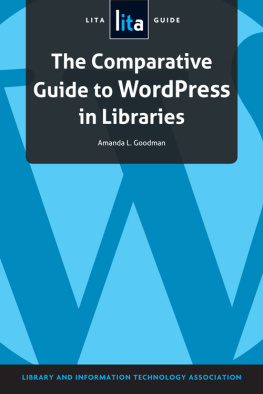

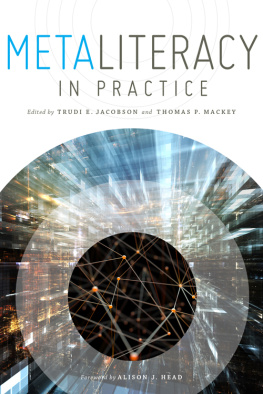
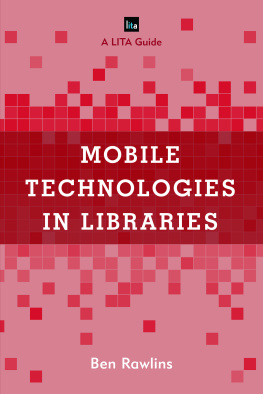
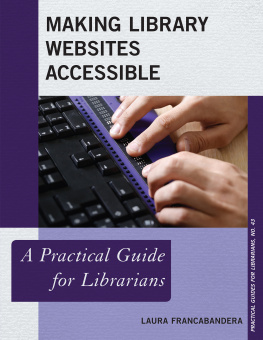
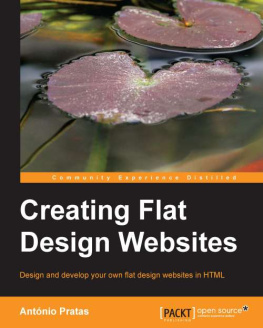
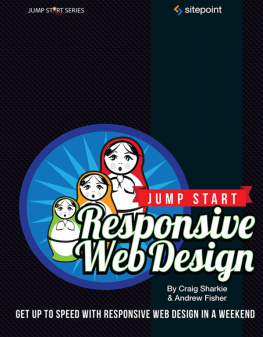
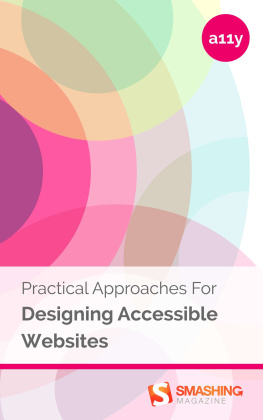
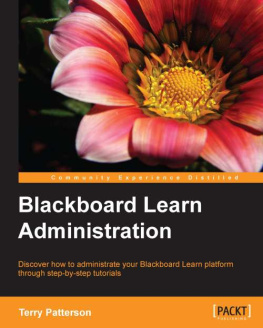
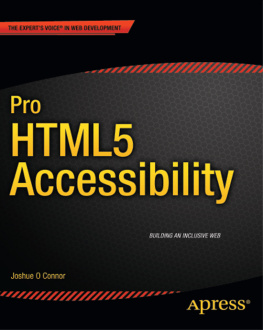
 The paper used in this publication meets the minimum requirements of American National Standard for Information SciencesPermanence of Paper for Printed Library Materials, ANSI/NISO Z39.48-1992.
The paper used in this publication meets the minimum requirements of American National Standard for Information SciencesPermanence of Paper for Printed Library Materials, ANSI/NISO Z39.48-1992.